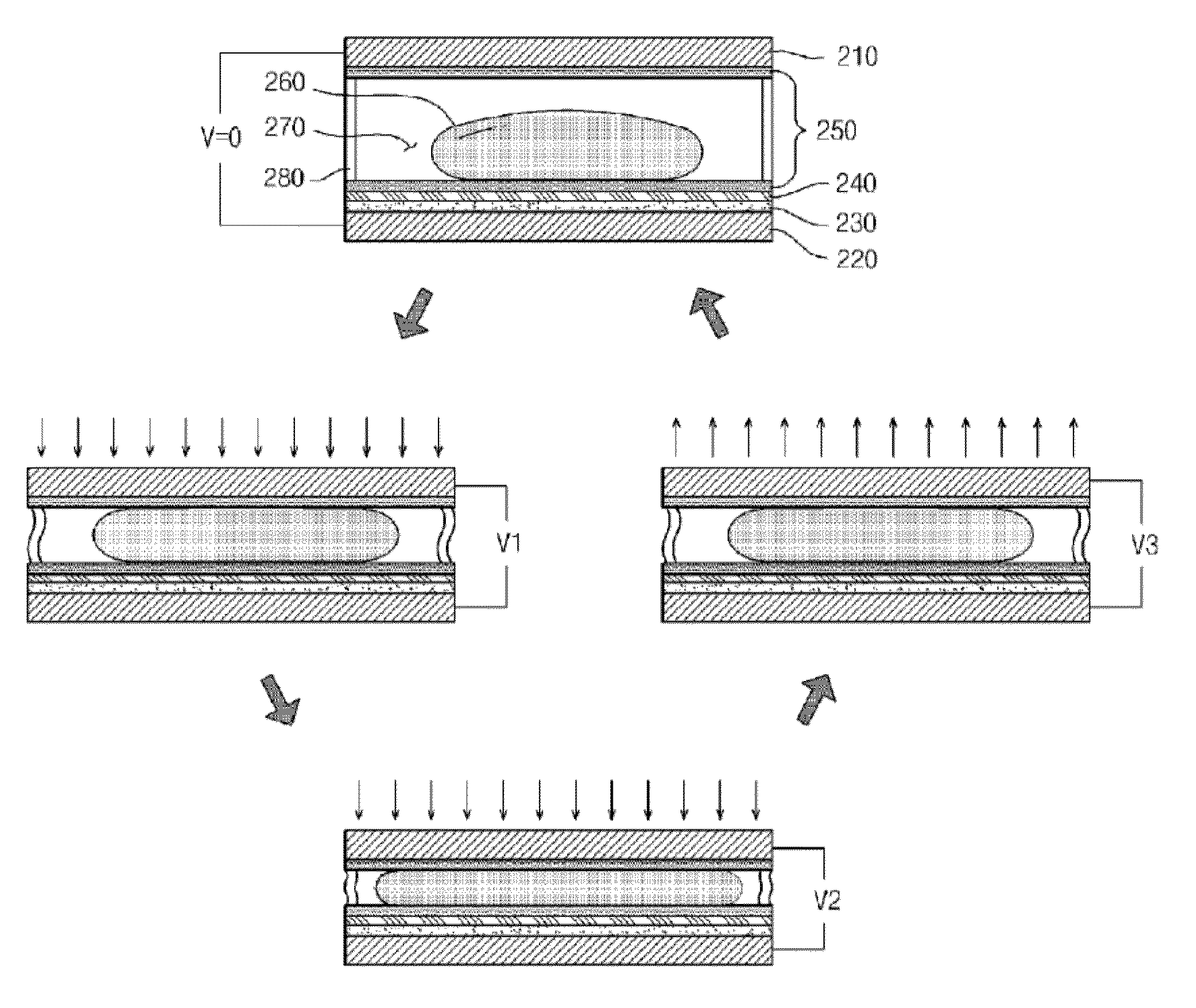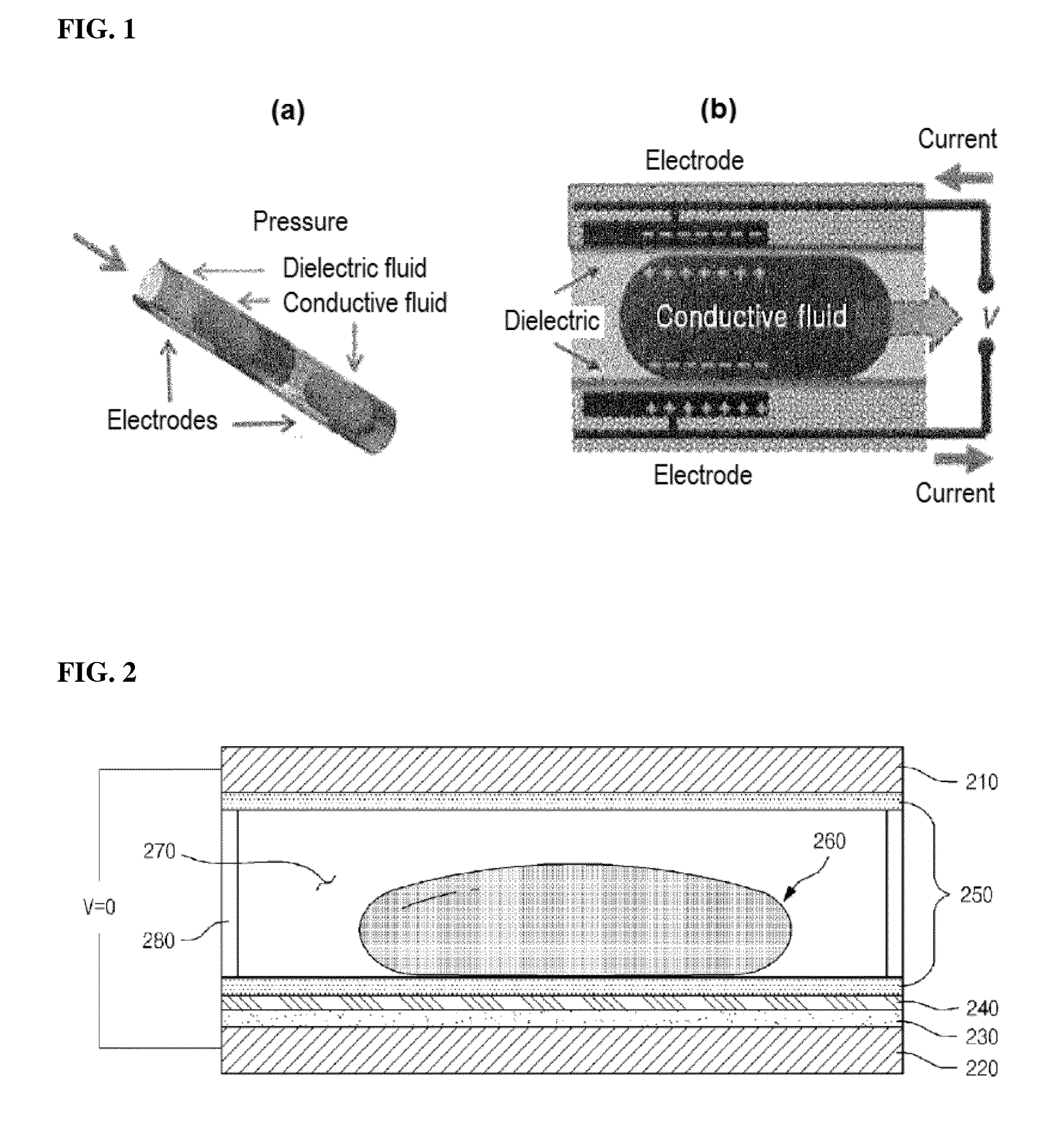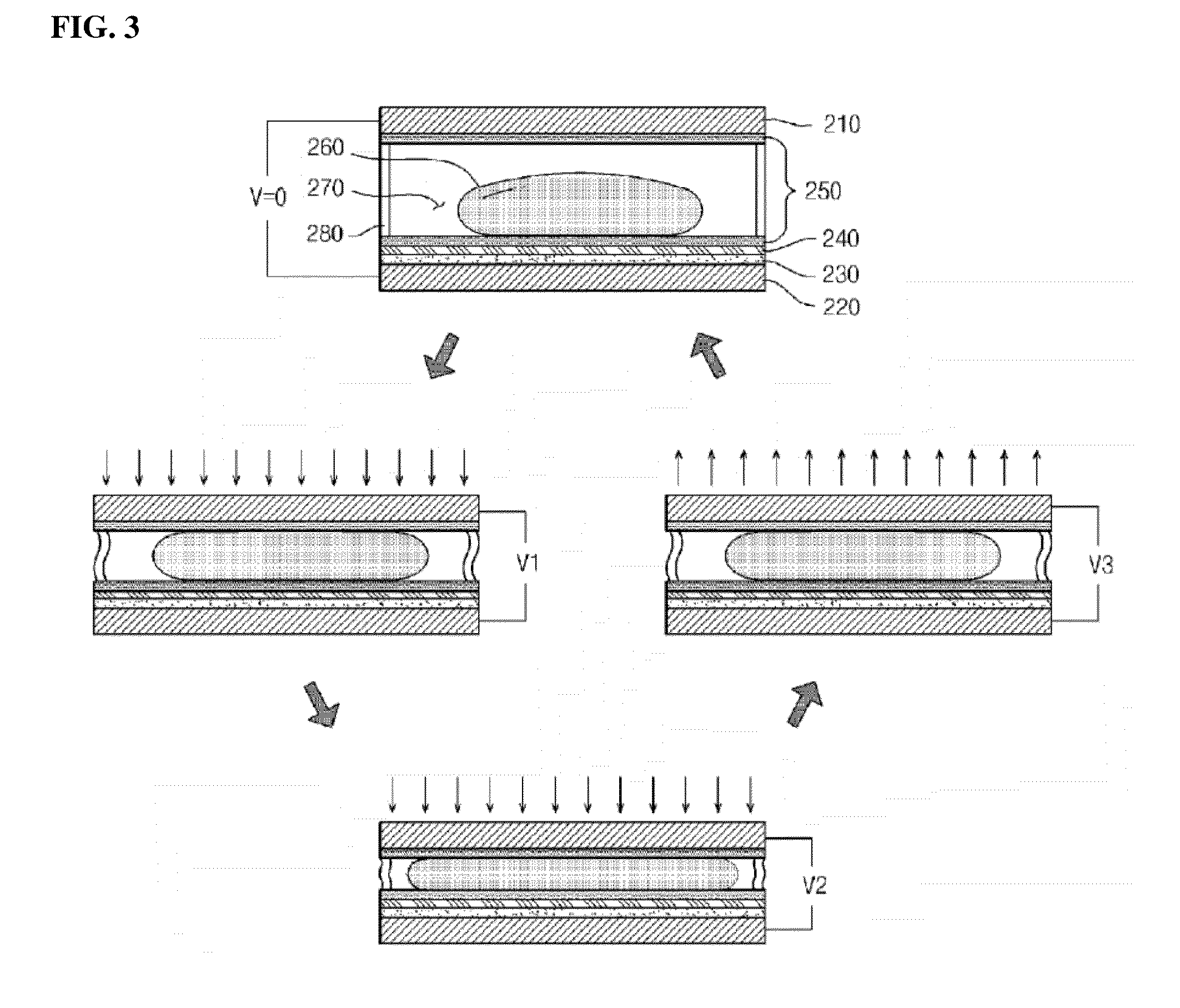Energy conversion device using change of contact area and contact angle of liquid
- Summary
- Abstract
- Description
- Claims
- Application Information
AI Technical Summary
Benefits of technology
Problems solved by technology
Method used
Image
Examples
Embodiment Construction
[0047]The advantages and the features of the present invention, and the method for achieving thereof will become apparent with reference to the exemplary embodiments described in detail hereinafter with the accompanying drawings. However, the present invention will not be limited to the exemplary embodiments described hereinafter, but will be implemented in a various different forms, and the exemplary embodiments are provided for the completeness of the disclosure of the present invention and to teach an ordinary person of skill in the art of the scope of the invention completely, and the present invention is only be defined by the scope of the claims. Meanwhile, the terms used in the description, is for describing the exemplary embodiments, but not to limit the present invention.
[0048]FIG. 2 is a block diagram of a device for converting energy using a fluid according to an exemplary embodiment of the present invention. According to FIG. 2, a device for converting energy using a flu...
PUM
 Login to View More
Login to View More Abstract
Description
Claims
Application Information
 Login to View More
Login to View More - R&D
- Intellectual Property
- Life Sciences
- Materials
- Tech Scout
- Unparalleled Data Quality
- Higher Quality Content
- 60% Fewer Hallucinations
Browse by: Latest US Patents, China's latest patents, Technical Efficacy Thesaurus, Application Domain, Technology Topic, Popular Technical Reports.
© 2025 PatSnap. All rights reserved.Legal|Privacy policy|Modern Slavery Act Transparency Statement|Sitemap|About US| Contact US: help@patsnap.com



